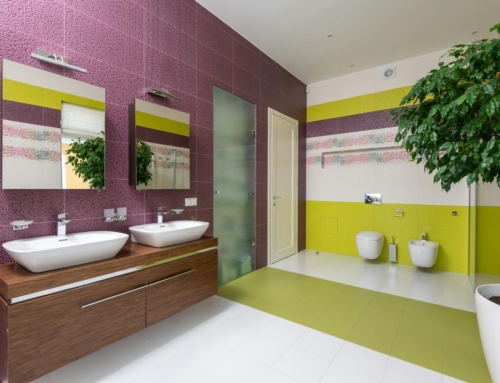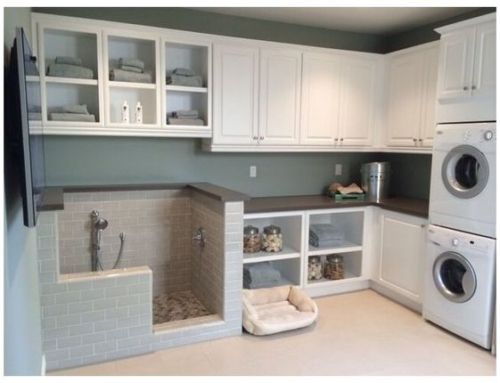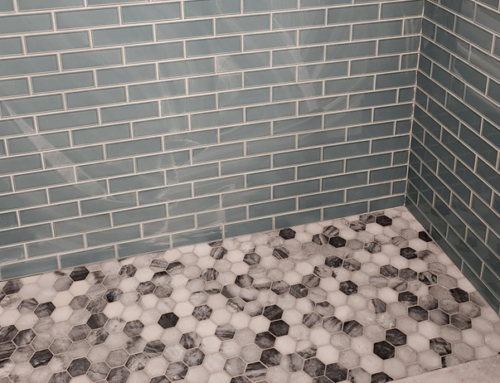Three words used to strike dread in the hearts of interior designers everywhere: wood panel walls. But before you dismiss wood as an accent or even alternative to drywall, consider some of the innovative applications designers are deploying in luxury homes across the country.
Not Just for Cigar Rooms Anymore
First off, scrap any old ideas you might have about wood panel walls. We’re not talking dank, subterranean mancaves lined with brandy snifters and humidors (although those do have their charm). Today’s designers are using bright, sometimes even colorful wood designs to create interest, contrast and texture in both new construction and remodeling projects.
Not only are designers no longer constrained to the dark-toned vertical slats that come to mind when you think “mobile home,” they’re not even limited to actual wood. Engineered products, including maintenance-free vinyl, take pattern, color and style possibilities to the limits of imagination.
An Exotic Accent… for Your Home
Using a different color latex to turn one side of the room into an accent wall is a great way to get a room to pop, but what about ditching paint altogether and going with something truly stunning? Woodgrain panels can convert an ordinary wall into a work of art, especially if they make use of one trait they have that old fashioned paint does not: a third dimension.
Wood panels aren’t just measured in height and width—they also have depth. Varying one, two or all three dimensions creates visual contrast and texture in ways that paint cannot—unless your contractor happens to know Leonardo da Vinci personally, that is.
Also remember, when mounted to the wall, wood paneling can run any direction, not just vertically. Horizontal and even diagonal patterns can make a room appear taller or wider, which is especially effective in closed-in spaces such as basements and converted attics.
Elegance Squared
Back in the days of old, designers understood the utility and durability wood provides. One application that has persisted in popularity throughout the centuries has been wainscoting—that waist-high ribbon of wood paneling you’ll often see wrapped around dining rooms. It lends a certain refinement to a room, calling to mind the great estates of Europe and colonial America.
But there’s no reason to stop at the chair rail. Full-sized wood panels, stretching from floor to ceiling and framed with quarter- to half-inch trim, create a distinguished look that mere drywall cannot approach. The slight protuberance of the moulding makes the ultra-smooth surface of the plywood that much more distinct.
Taking the ‘Pain’ out of ‘Painting’
One of the advantages of using wood panels on your walls is that it opens up far more possibilities in terms of treatment. Unlike drywall, which really only plays well with acrylic, wood can be covered with either acrylic- or oil-based products, or—and here’s where wood really shines—it can be stained to give it an earthier tone than you could ever get with paint.
Stain protected with a healthy coat of polyurethane will offer the most maintenance-free surface you’re ever going to find on a wall. Just wipe it down a few times a year with lightly soapy water, and you’re set. It’ll probably never need another coat of poly, but even if it does it’ll only be once or twice in your whole lifetime.
However, if you’re the type of homeowner who likes to switch it up every few years, paintbrushes and rollers may be in your future. The good news is wood is every bit as paintable as drywall, if not slightly more so. Although both are absorbent, paint adheres to wood somewhat better and with fewer coats, meaning faster turnaround times and longer-lasting paint jobs.
An Insulating Investment
In the simplest terms, insulation is added by increasing the density of materials between the inside of your home and outside temperatures. That’s why brick—far denser than vinyl siding—is such a better insulator.
Same goes for wood.
There’s a reason the earliest homes were made of logs: The density of their hardwood frames was its own insulation—no fiberglass needed. Today’s construction techniques put the most innovative technologies to work on keeping your home warm or cool while minimizing power consumption. That said, covering your walls with wood will only increase your home’s energy efficiency, resulting in a net reduction in utility costs over time.
Whether your goal is to spice up an otherwise flat space or bring an air of refinement to your remodeling project, Flooring Masters & Professional Remodelers have extensive experience installing wood panels as flooring, walls, or any other application you can think of. Call or email Flooring Masters & Professional Remodelers today for a free consultation. We know you only want the best in flooring. That’s why it’s important to hire the best in the business, and at Flooring Masters & Professional Remodelers, we can guarantee you that’s us.
Flooring Masters & Professional Remodelers have been flooring and remodeling Kentuckiana for over 30 years. Our certified installers have the ingenuity and know-how to assist you in choosing the perfect floors for your home. Don’t take matters into your own hands—let us guide your next project.











